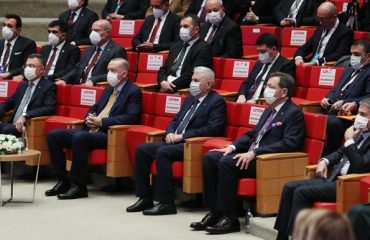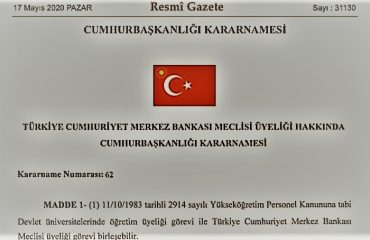

The Economic Reform Package was announced by President Recep Tayyip Erdoğan on March 12. As an economist who specializes in monetary policy, I found the following statement rather struggling:
“We will put the frequently mentioned price stability aside.”
This remark can have opposite interpretations:
1) Frequent emphasis on price stability increased our awareness on the issue as the policymakers. We don’t even need to discuss this anymore. It is true that inflation targeting was unsuccessful and price stability could not be achieved so far. However, we will act in accordance with price stability, as the new Central Bank governor, Naci Ağbal, frequently emphasizes it.
2) We have more important issues than price stability on our agenda. Price stability has never been our priority. And it will not be a priority moving forward. We will focus on short-run growth-oriented policies and return to our priorities that were adopted in the era before Ağbal.
It is hard to pinpoint what the President had in mind when he said he will “put price stability aside”. I believe the markets will try to figure this out in the days ahead. This makes the upcoming CBRT decision on March 18 even more critical.
The rise in U.S. bond yields triggered outflows from the emerging markets, depreciating their currencies. Turkish Lira (TL) diverged from the rest of emerging market currencies in a negative way. In the period after February, TL was the currency that was hit the hardest among other EM currencies. The worries about the short history of the new economic team, coupled with the existing vulnerabilities increased our overall risks. This also illustrated how tangible the existing equilibrium was.
The depreciation in TL increases the policy rate that is necessary to achieve price stability. This triggers a vicious cycle. As the TL depreciates, the inflation rate goes up. As the inflation rate increases, it feeds into inflation expectations. The increase in inflation expectations causes further sell-offs in the TL. Thus, CBRT has to assume a more hawkish stance in order to achieve its year-end inflation target.
In order to end this vicious circle, Naci Ağbal recently wrote a blog piece where he emphasized price stability and the determination to achieve the 5 percent target. Ağbal’s commentary aimed to limit the deterioration in inflation expectations. The idea was to minimize the necessary tightenings during the pandemic period.
In order for such kind of forward guidance to be effective, it has to be a “credible threat”. If the markets are convinced that the CBRT can hike rates in the absence of a decline in inflation expectations, then it may be possible to lower inflation expectations without a rate hike. Ağbal likely played his hand to exploit the modest credibility that he had gained by hiking rates by 625 basis points during the five months of his tenure. If the external pressures did not strengthen, he could perhaps get away with forward guidance alone. Yet the upwards trend in U.S. yields along with the remarks that came on March 12 further weakened this possibility.
Which scenario?
In an environment of depreciation in TL, the remarks that came during the announcement of the economic reform program were critical. If the first interpretation is valid, then the chances of a strong hike on March 18 increase. Such a move would lower the pressures on the TL. Furthermore, it would strengthen the perception that price stability is perceived to be the pre-condition for price stability, which would lower the risk premium.
If the second interpretation is valid, however, then the chances of no hike or a hike that is less than the 1 percent market expectation will be more likely. This scenario would particularly make it harder for Naci Agbal to re-establish his credibility.
Price stability committee
I don’t know which of these two alternative interpretations is valid. Nevertheless, the poor performance of inflation targeting in the past makes me think that the second interpretation might be more likely. The announcement of a “price stability committee” increases the plausibility of the second interpretation as well. It is hard to imagine the functions of such a committee that is formed aside from the CBRT. I cannot quite figure out what this committee might achieve that cannot be achieved by the central bank alone, whose primary function, granted by law is to achieve price stability itself. I haven’t heard of a similar committee that works along with the central bank elsewhere in the world either. There might be examples, but I haven’t heard of it as a common practice because it seems to be redundant when there is a central bank that serves the same purpose.
It is hard to overrule the risks that such a committee might present by damaging central bank independence, blurring central bank communication and “putting the price stability aside.”


